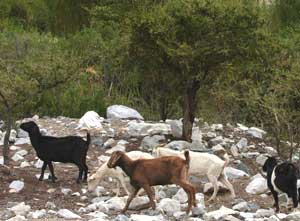
By Jade Frank
Close your eyes and try to imagine life at Earth’s magnetic center. Are you picturing volcanoes, tidal waves, earthquakes and molten lava? Try an oasis of wandering goats, fermented grapes, new age gurus and telescopes.
Believe it or not, the spot on earth that’s supposedly most energetically charged is an arid valley to the west of the Andes, in central Chile, the Elqui Valley.
Spiritual wanderers and gurus of meditation, yoga, astrology and the like settled in Chile’s Elqui Valley in the 1960’s. Their search led them to this location, at 30 degrees South and 70 degrees West, a place where two rivers (the Turbio and Claro) act as the ying and yang of Earth’s new water chakra or “Svadhisthana.”
Astrology tells us that for the past 2000 years, Earth’s previous magnetic center was located at 30 degrees North in the Himalayas, in Tibet. That, however, was in the Age of Pisces. Today, in the Age of Aquarius, the magnetic core has flopped hemispheres to 30 degrees South.
In 1982, scientists measured Earth’s magnetic forces for the first time by satellite. Sure enough, the hippies were right on. The satellites found the Earth’s greatest point of energy in South America, around Chile’s Elqui Valley.
The Great Poetess
From Chile’s oldest coastal city, La Serena, the Elqui Valley can be reached by bus. Several bus companies leave from La Serena’s bus terminal.
Vicuna
The first stop of interest along the way is Vicuna. Here you can visit the museum of Gabriela Mistral (1889-1957), famous Chilean poetess and winner of the Noble Peace Prize for Literature in 1945. The museum is open daily and aims to preserve the work and memory of the great poetess.
There is a second museum and a monument honoring Mistral in Montegrande.travel the route east into the valley, stopping in villages along the way to pick up and drop off school children and other locals. The drive into the valley is breathtaking as the scenery moves away from coastal and into the mountains.
Mistral was born in Vicuna and became a teacher there at the age of 15. She continued teaching all over Chile and then later in Portugal, Spain, France and Brazil. She became a widow early in life and though she never bore children, her poetry reflects her love and admiration for them.

Chilean culture and the natural environment surrounding Vicuna also influence her poetry. Reading Mistral’s poetry is a good way to acquaint yourself with the magic and beauty of Chile and the Elqui Valley.
Twinkle Twinkle, Little Star
Another reason to stop in Vicuna is a chance to visit the Mamalluca Municipal Observatory. That’s right, the Elqui Valley isn’t known just for its magnetism, this region also happens to sit under one of the clearest atmospheres in the world.
The Elqui Valley sits out of the way of city lights and maintains a gentle, steady climate with little wind or precipitation. So if stargazing is your thing, you’re about to be blown away.
On a moonless night, the starry skies can be seen up to the eighth magnitude with the naked eye. The Milky Way is oh-so-milky and Jupiter makes the brightest show at night. In fact, the galaxy’s viewing is so superb, numerous international observatories have been constructed in the area.
Mamalluca is an amateur-friendly facility, located just nine kilometers northeast of Vicuna. The observatory offers tours every night of the year, and a chance to look through its advanced telescopes, allowing surreal glimpses at the galaxy unlike anywhere else in the world. The most exciting site is a look at Saturn’s rings!
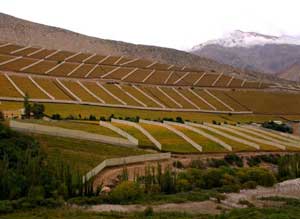
In order to schedule a visit, you must register at the Observatory office in Vicuna, near the main plaza at Calle Gabriela Mistral 260. Reservations can also be made by contacting the observatory through email at reserves@momalluca.org.
National Pride and Punishment
From Vicuna, the road in the Elqui turns south to the towns of Paihuano, Montegrande and Pisco Elqui. Famous Chilean pisco distilleries can be visited surrounding the namesake town of Pisco Elqui.
The valley’s location and temperature isn’t solely a prime recipe for stargazing. Grapes also thrive on the climate of this semi-arid valley. Chile is becoming increasingly more notorious for its wine production.
The entire mid-section of this string bean-like nation, hugging the Andes to the West, is dotted with vineyards. The Elqui Valley, in the Coquimbo Region or Region Six, makes a tasty contribution to Chile’s wine culture.
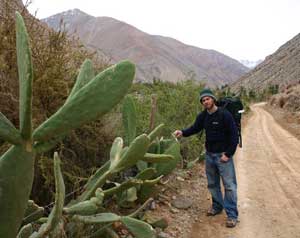
Spanish conquistador, Francisco de Aguirre, founded the city of La Serena and planted the first vineyards of the region with cuttings from Spain. The area now produces excellent Merlot, Cabernet Sauvignon, Cabernet Franc and Chardonnay.
Even more importantly for the region’s economy, the Elqui Valley is the country’s number one producer of pisco, the national alcohol of choice. From the southern reaches of Chile to its northern deserts, pisco is a national pride and punishment.
The clear and golden alcohol made from grapes and ranging from 30 proof to 45, is best when mixed, although some like it straight. Popular pisco cocktails are the piscola (pisco mixed with coke) and pisco sour (pisco blended with ice, lime juice and sugar).
The robust, odd tasting liquor gets better with experience, though never fails to leave a nasty headache in the morning. The best part is the price: a bottle of good pisco will only set you back 1,500 pesos (about $3 US).
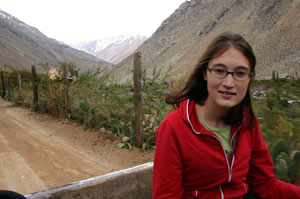
Pisco is most commonly made from the Muscatel Rose, Alexandria Muscatel and Austrian Muscatel grapes. Similar to wine production, the grapes are harvested, fermented, distilled, and stored in wooden barrels to taste.
Several well-known distilleries like Tres Erres, Los Nichos and Pisco Peralta exist around Pisco Elqui and offer daily tours and tasting. For more information on these tours and locations, check their websites online. Chile’s most affordable and popular pisco brand, Capel, has a distillery just outside of Vicuna.
Natural Therapy
The valley’s center of magnetism, natural therapy and UFO sightings surrounds Cochiguaz, a magical town located eleven miles (18 km) from Montegrande. New age folk, yoga enthusiasts, crystal worshipers and others following their spiritual karma or avoiding the “real world” have settled in this community for a peaceful life surrounded in natural energy.
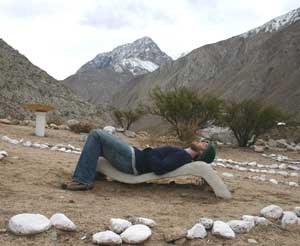
There are no buses that travel the dirt road to Cochiguaz. The only way is to hitch a ride from Montegrande, or wait in the plaza for a woman in a red truck.
She gives the school children rides home and can take you for a 500-peso bumpy ride in the back. Check with hotels and spa centers ahead of time for possible pick-ups as well.
The community welcomes tourists and offers a wide array of therapy centers offering reiki, aromatherapy, massage, herbal baths, tarot readings, etc. Most of these facilities have accommodation and restaurants specializing in vegetarian and natural foods. Spa Cochiguaz is the most recently opened. For information and reservations, you can contact them at spa@cochiguaz.com.
The best way to take in the natural wonders of the Elqui Valley is to camp under the stars along the Cochiguaz River. Camping Cochiguaz is located at the end of the road, far away from noise or lights and offers camp sites with communal showers and toilets.
It’s also located directly beneath the mountain where all of the valley’s magnetic and spiritual energy emanates from. The campground is run by Manuel, a friendly local, and is often visited by horses, dogs and goats, so hide your food at night.
From Cochiguaz, natural stargazing is the best. Along the path to Camping Cochiguaz there is an Incan observatory where you can view the stars like the land’s ancestors did hundreds of years ago.
Anthropology students from the Universidad Catolica de Valparaiso made a trek to the valley and reconstructed an Incan observatory complete with a stargazing chaise lounge. At night, only white stones that mark the path light the area. Here you can lay and gaze for as long as you like, imagining the ancient Incan gods and their theories on the heavens.
Whether you’re seeking unspoiled nature, pristine skies for stargazing, a Zen experience in natural therapies or just a good pisco buzz, the Elqui Valley makes a relaxing and interesting travel destination that’s a bit off the beaten path
Jade Frank lives to travel and documents it with writing and photography. She lives in Amsterdam.Read Jade Frank’s story about Mendoza:Mendoza, Argentina’s Vendimia Festival: Celebrating Beauty, Culture and Fine Wine
- Mongolia, the Land of Eternal Blue Sky - April 20, 2024
- These 9 U.S. National Parks Require Reservations in 2024 - April 17, 2024
- Take a Hike in Olympic National Park - April 17, 2024




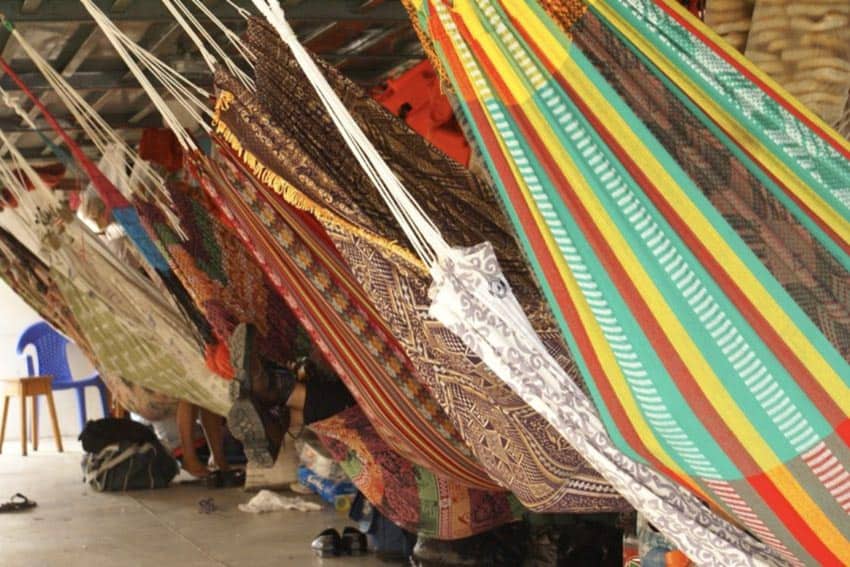
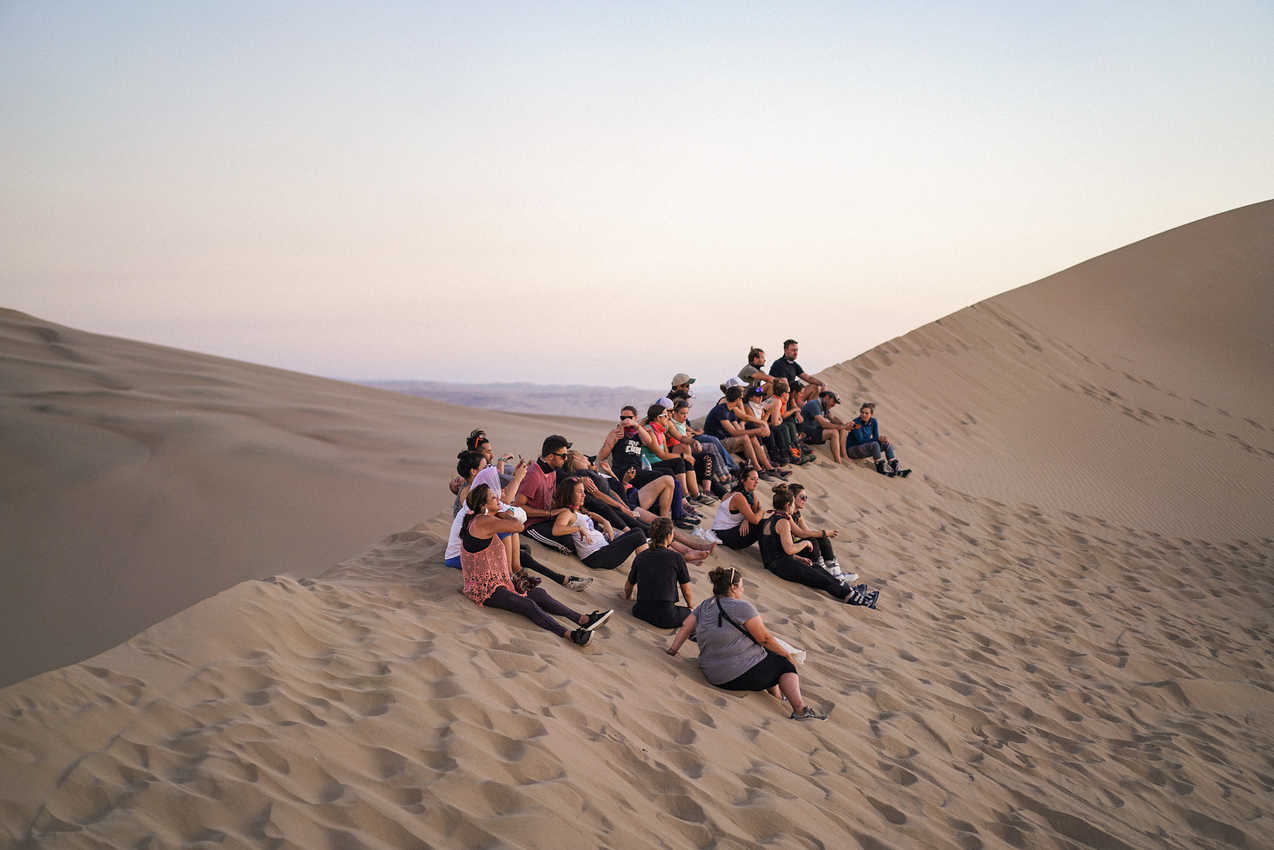
I’m interested in the physical and metaphysical energy characteristics of the Elqui Valley. Do you have any references for the astrological analysis that concluded the magnetic relocation from Tibet? And do you have a report from the 1982 scientific satellite measurements?